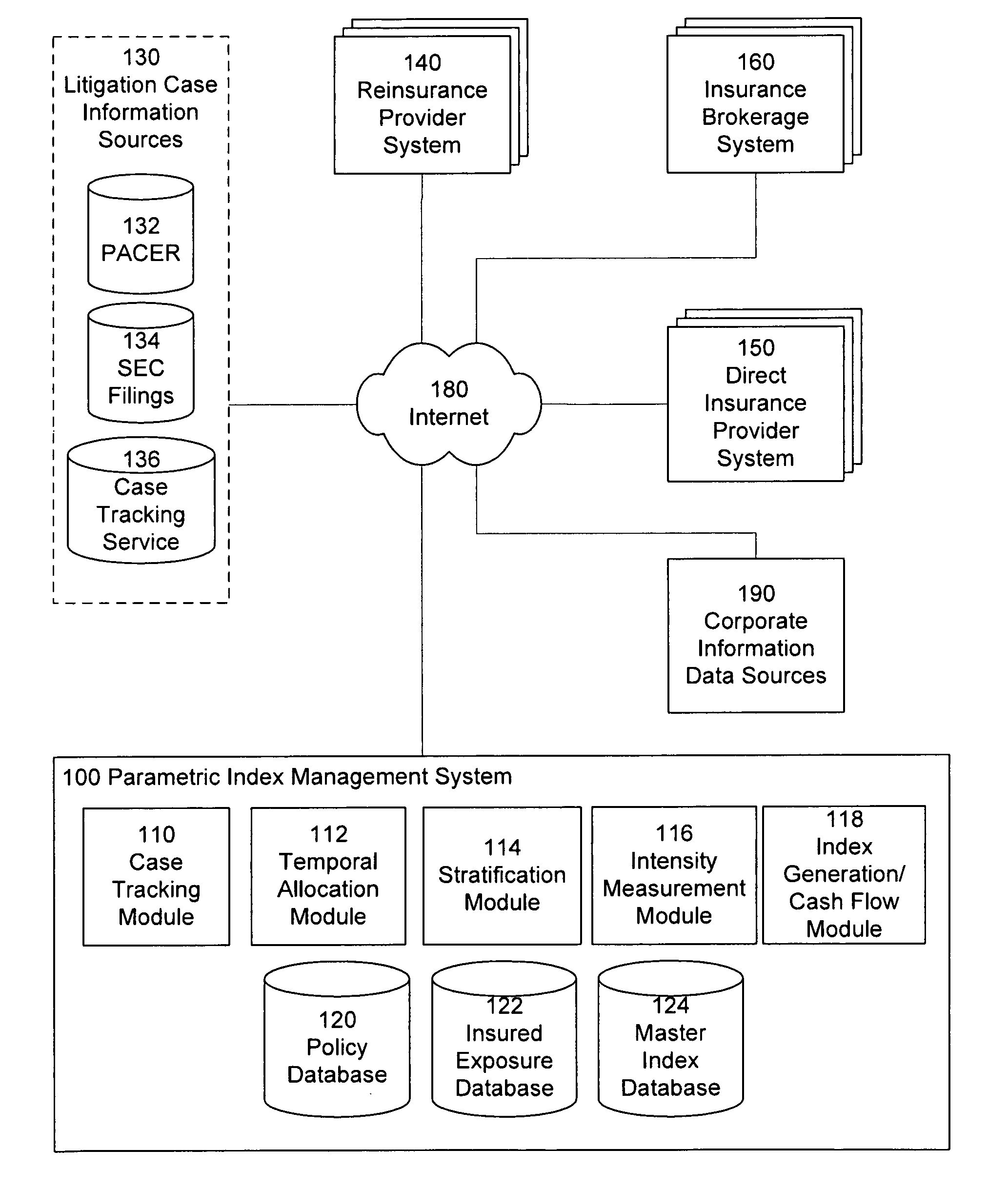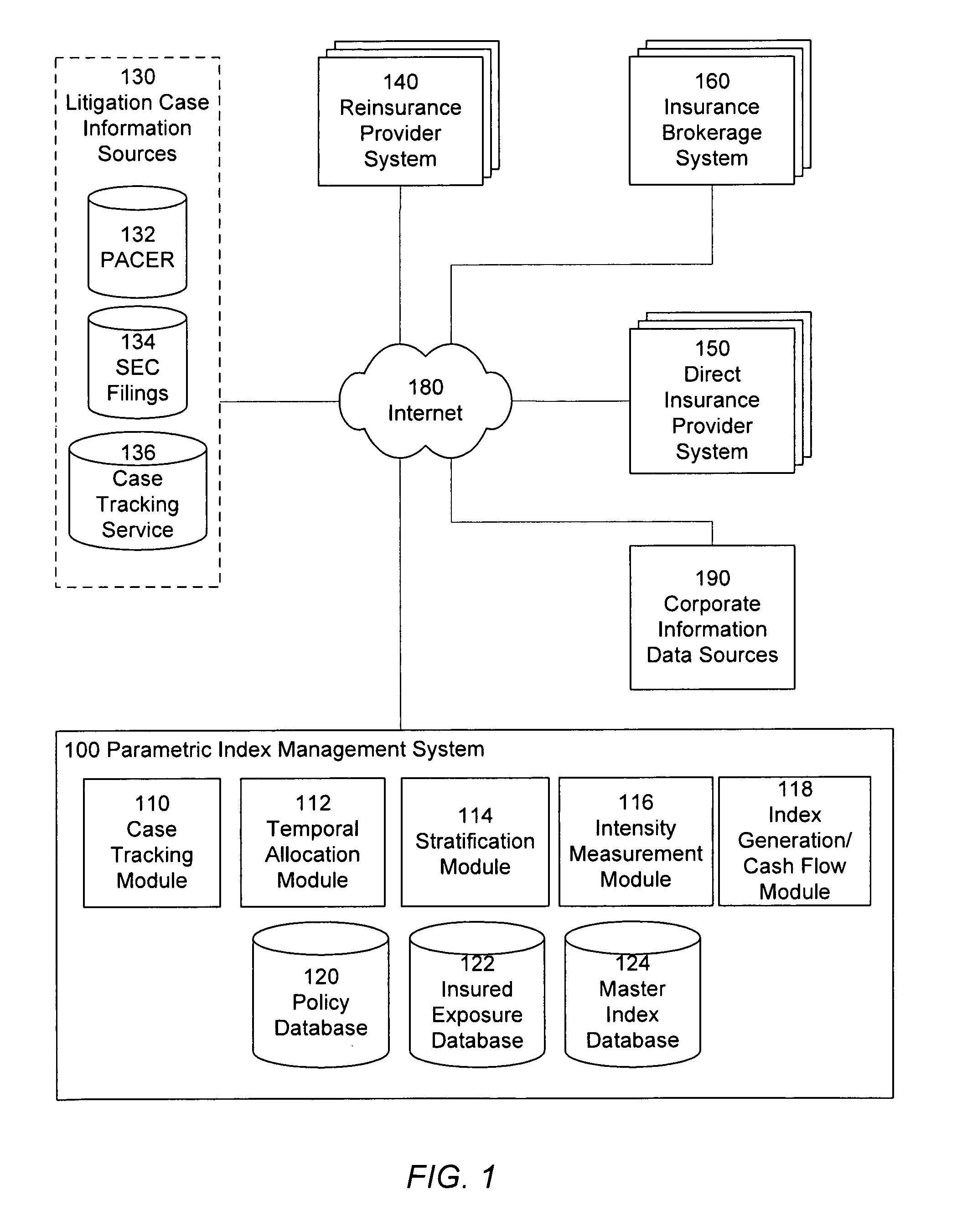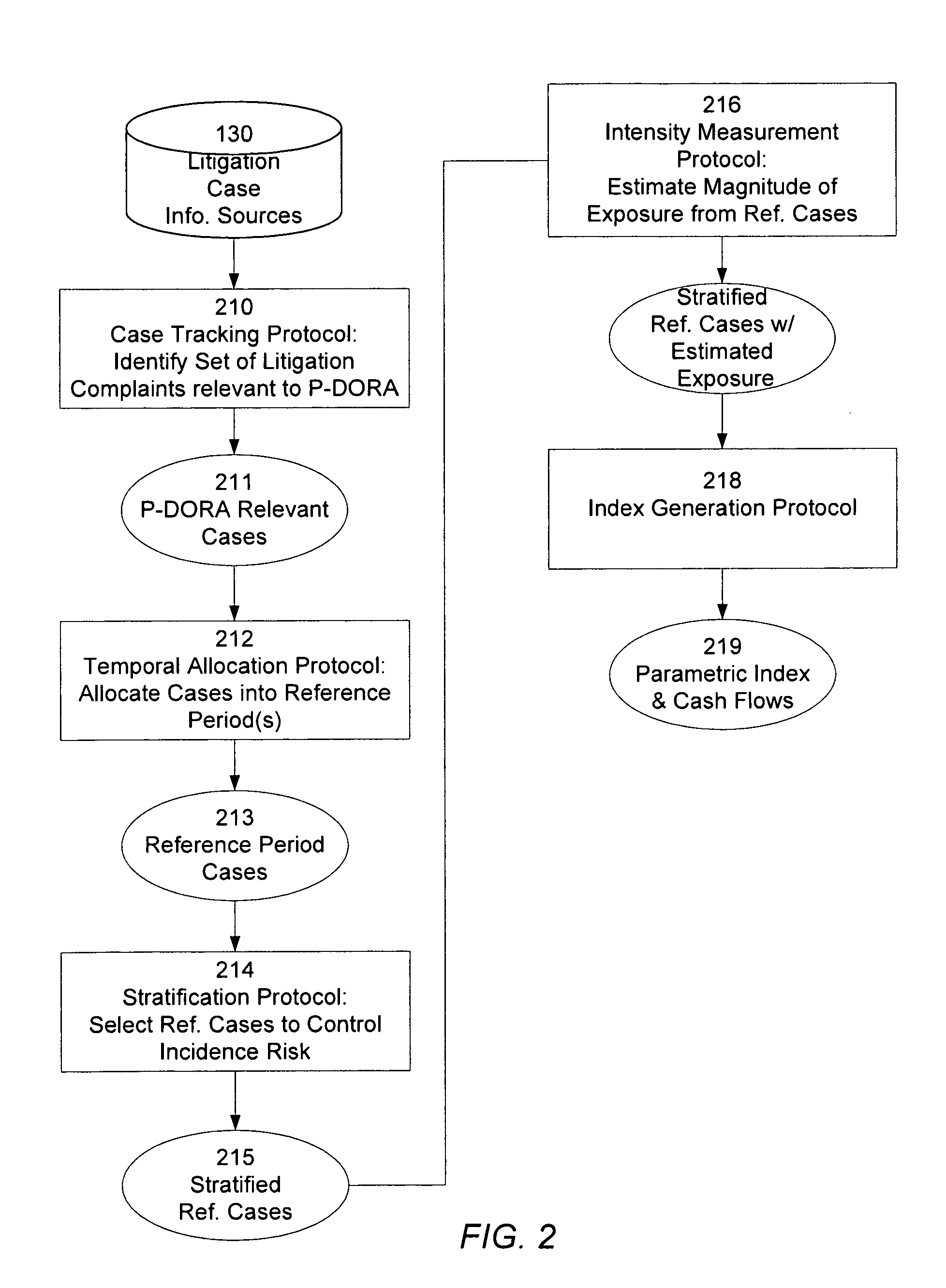Parametric directors and officers insurance and reinsurance contracts, and related financial instruments
a parametric director and officer and contract technology, applied in the field of parametric directors and officers insurance and reinsurance contracts, and related financial instruments, can solve the problems of large amount of policy coverage limits being exhausted, entire policy being consumed by litigation expenses, and incurring relatively low reinsurance claims, etc., to facilitate more efficient forms of risk shifting and disaggregate pricing
- Summary
- Abstract
- Description
- Claims
- Application Information
AI Technical Summary
Benefits of technology
Problems solved by technology
Method used
Image
Examples
Embodiment Construction
I. Overall System Architecture
[0037]FIG. 1 illustrates a system architecture for a parametric index management (PIM) system 100 that generates parametric indices based on litigation activity of one or more types against corporate entities, and a related Parametric D&O Insurance Agreement (P-D&O) based thereon. The types of litigation activity on which the parametric indices can be based are any type for which a insured would seek D&O insurance and any type for which a cedent would seek reinsurance, or a retrocedent would seek retrocession from a retrocessionaire, but are not limited to federal class action securities, state corporate law derivative claims, financial restatements, announcements of formal or informal orders of inquiry entered by the SEC, announcements of federal or state civil or criminal enforcement proceedings errors and omissions claims, claims of patent infringement, claims of violation of the Foreign Corrupt Practices Act, and claims of product or environmental l...
PUM
 Login to View More
Login to View More Abstract
Description
Claims
Application Information
 Login to View More
Login to View More - R&D
- Intellectual Property
- Life Sciences
- Materials
- Tech Scout
- Unparalleled Data Quality
- Higher Quality Content
- 60% Fewer Hallucinations
Browse by: Latest US Patents, China's latest patents, Technical Efficacy Thesaurus, Application Domain, Technology Topic, Popular Technical Reports.
© 2025 PatSnap. All rights reserved.Legal|Privacy policy|Modern Slavery Act Transparency Statement|Sitemap|About US| Contact US: help@patsnap.com



